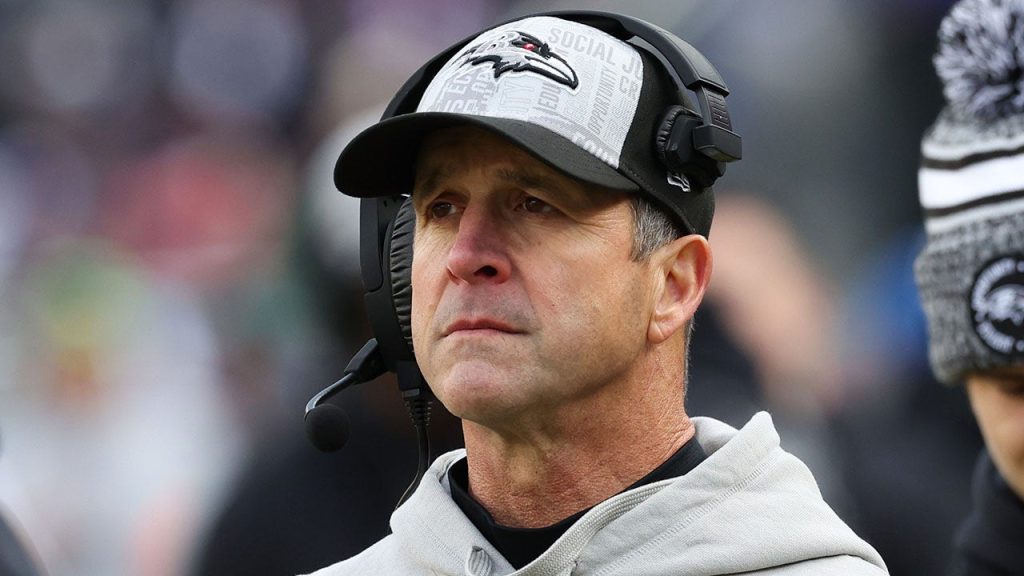Baltimore Ravens head coach John Harbaugh recently expressed his support for the NFL’s decision to ban the hip-drop tackle technique during the annual meeting. Harbaugh highlighted the three-part movement involved in executing the tackle and emphasized the increased risk of serious injury associated with it. He suggested that players should instead focus on traditional tackling methods used for over a century, such as wrapping up the ball carrier and tackling them to the ground. The controversial hip-drop tackle has been a hot topic in the league, with injuries like former San Francisco 49ers safety Jimmie Ward’s tackle on Dallas Cowboys running back Tony Pollard and Baltimore Ravens tight end Mark Andrews’ injury against the Cincinnati Bengals bringing attention to its dangers.
The hip-drop tackle technique, where a defender wraps the ball carrier with their arms and then drops their hips, causing the other player’s legs to be trapped, has been cited for its potential to cause serious injuries. NFL Commissioner Roger Goodell has played a significant role in leading the push to ban the tackle, with data showing that it increases the risk of injury 25 times more than a standard tackle. The NFL has identified 105 hip-drop tackles out of 20,000 tackles reviewed since 2022, further solidifying the need to address the issue. Harbaugh’s stance on the tackle ban aligns with the league’s efforts to prioritize player safety and reduce the occurrence of preventable injuries on the field.
Former San Francisco 49ers safety Jimmie Ward’s tackle on Dallas Cowboys running back Tony Pollard during the 2022 postseason serves as a notable example of the detrimental effects of the hip-drop tackle. Pollard suffered an ankle injury that required surgery, highlighting the severity of the risks associated with the technique. Similarly, Baltimore Ravens tight end Mark Andrews fell victim to a hip-drop tackle during a game against the Cincinnati Bengals, resulting in a significant injury that sidelined him for the majority of the 2023 season. These incidents underscore the urgent need for the league to address the dangers posed by certain tackling techniques and prioritize player safety above all else.
Harbaugh’s comments shed light on the origin of the hip-drop tackle, mentioning its discovery in rugby and subsequent adoption as a standalone technique in football. He emphasized the need for players to revert to traditional tackling methods that have been effective for over a century, citing players like Ray Lewis as examples of successful tacklers who did not rely on the risky hip-drop technique. By banning the hip-drop tackle, the NFL aims to mitigate the potential for serious injuries and reduce the prevalence of high-risk plays that could jeopardize player health and safety. The decision to eliminate the hip-drop tackle reflects the league’s commitment to upholding strict standards for player conduct and promoting a safer environment for athletes to compete in.
In conclusion, the NFL’s decision to ban the hip-drop tackle technique has garnered support from Baltimore Ravens head coach John Harbaugh and other stakeholders in the league. The move is driven by concerns over the increased risk of serious injuries associated with the tackle, as evidenced by incidents involving players like Tony Pollard and Mark Andrews. By prohibiting the use of the hip-drop technique and encouraging players to rely on traditional tackling methods, the NFL is prioritizing player safety and taking steps to reduce the occurrence of preventable injuries on the field. The implementation of this rule change underscores the league’s commitment to maintaining high standards for player conduct and promoting a culture of safety and accountability in professional football.


